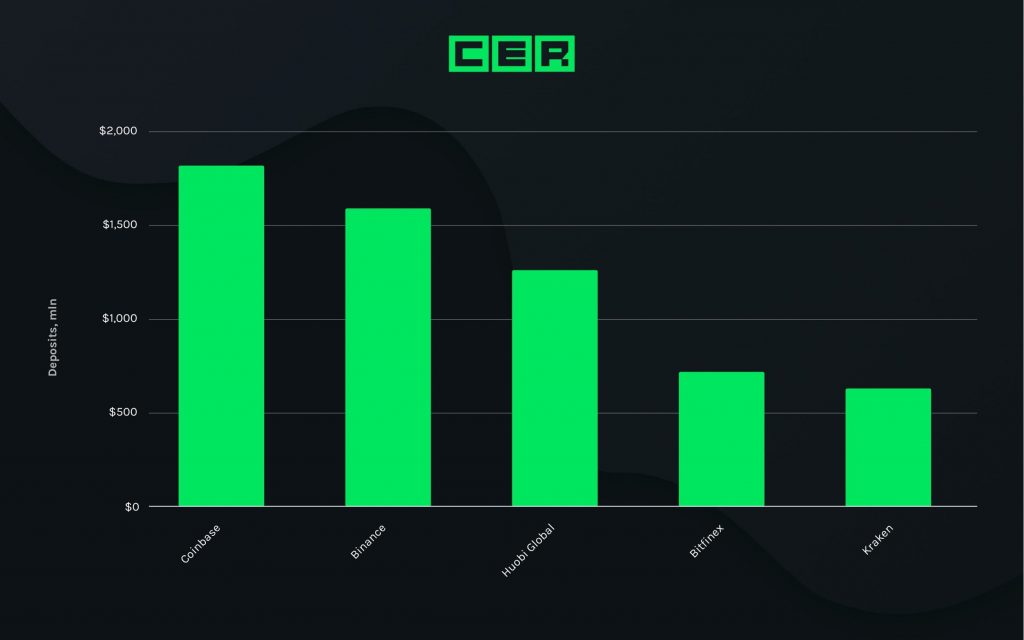
Wednesday’s edition of The Daily charts the rise of blockchain phones and the effects they’re exerting on the tokenized assets supported by their built-in wallets. We also examine Europe’s favorite crypto card service, which is invading Asia and making it easier to cash out of cryptocurrency, and consider the similarities between crypto exchanges and banks in terms of assets under management.
Smartphone Support Sends Tokens Soaring
On Feb. 22, a number of ERC20 tokens recorded impressive double-digit growth, while the rest of the market remained stagnant. Their revival can be attributed to the rise of blockchain smartphones. The devices, which include the Finney by Sirin Labs and the Exodus 1 by HTC, contain hardware wallets for securely storing cryptocurrency. Enjin Coin (ENJ) more than doubled in price after reports emerged that the new Samsung Galaxy S10 would come loaded with the Enjin Crypto Wallet.

Meanwhile, mana was also rocketing in price, after it was revealed that the latest edition of the Exodus 1 smartphone will support Decentraland’s native token as well as the LAND parcels themselves, which will be tradable within the phone’s built-in Zion wallet. It was also announced that the Exodus 1 will now come with the crypto-friendly Opera browser installed by default which integrates with the Zion wallet to facilitate online crypto purchases. At the moment, only ETH is supported in the Opera browser, but there are plans to add BTC. The upward trajectory of ENJ and MANA demonstrates the growing interest in blockchain smartphones, and the growing integration of crypto into consumers’ daily lives.
Wirex 3.0 Makes Crypto Cash Out Easier
Leading European cryptocurrency wallet and Visa card provider Wirex has had a makeover. In addition to unveiling a new logo, version 3.0 includes expansion into the Asia-Pacific (APAC) region. Wirex has also introduced numerous fiat currencies that its debit card now supports, and bank transfers which can be paid by SEPA, Swift or Faster Payments. As the company noted in its press release, the provision of bank transfers is not in itself ground-breaking, but “having this new feature available for Wirex customers gives them the ability to cash out their cryptocurrencies to an external bank account seamlessly, cost-effectively, and in a user-friendly interface – a game-changer in the world of crypto.” The company has promised that transfers will be charged at “an OTC rate – a feature normally only available to institutional counterparties.”

Other features announced as part of the relaunch include:
- Expansion into APAC with 12 traditional currencies and four digital currencies (EUR, GBP, AUD, CAD, CHF, CZK, HKD, HUF, JPY, MXN, SEK, SGD and BTC, LTC, XRP, ETH.)
- The launch of Wirex Business, a platform which allows businesses to register and transact on their crypto accounts under a legal entity name.

Traditional Banks vs Crypto Exchanges
Exchanges are the banks of the cryptocurrency world, with the leading digital asset platforms responsible for the custody of billions of dollars of customer funds. The parallels between these giants of the legacy and future finance realms have been further demonstrated in a new report by Crypto Exchange Ranks (CER). It compares the client deposits in leading banks with those of the leading crypto exchanges, before concluding:
The top-5 trading platforms’ wallet balances lag behind the deposits in local banks by 15 times on average. The gap between trading platforms and top-5 banks by this indicator is more remarkable – over 1,000 times. It implies the long way for crypto exchanges to go in order to attain a truly global scale, which will be measured not by virtual numbers of trading volumes but by real customer funds, trusted to exchanges.
What are your thoughts on the stories in today’s news roundup? Let us know in the comments section below.


No comments:
Post a Comment